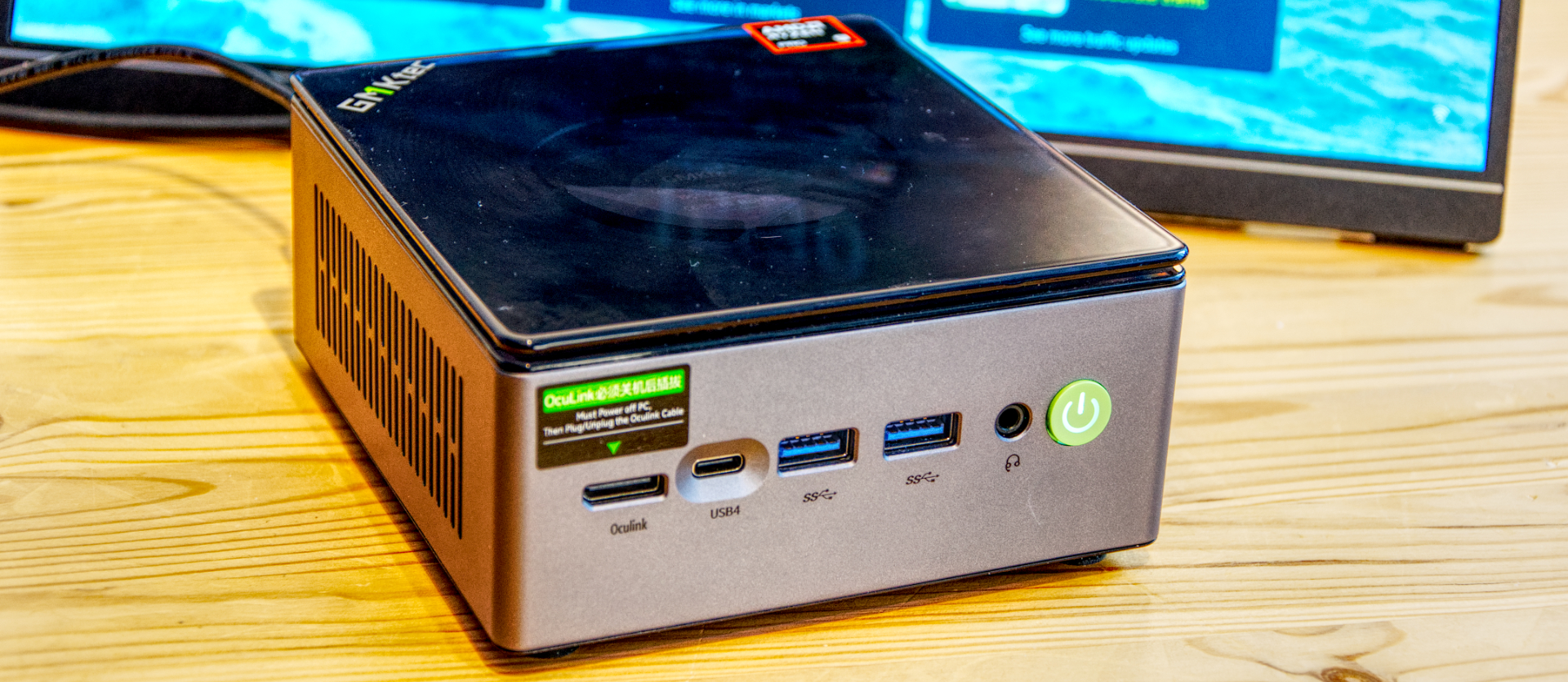TechRadar Verdict
While it might not sport the latest mobile Ryzen chip, the inclusion of OCuLink makes this a much more flexible Mini PC than most. If you outgrow the Radeon 680M, most modern video cards can be externally mounted for dramatically more power.
Pros
- +
Powerful platform
- +
Dual M.2 2280 slots
- +
Dual 2.5GbE LAN
- +
Easy internal access
Cons
- -
Can be noisy in performance mode
- -
OCuLink port is on the front
- -
GMKtec don't have an OCuLink enclosure
Why you can trust TechRadar
GMKtec NucBox M7 Pro: 30-second review
GMKtec has a mini PC for every occasion it appears, and the new M7 Pro is one that reaches out to those who find the integrated video technology offered by AMD not quite cutting it for their requirements.
Built around the 6000 series AMD Ryzen 9 PRO 6950H, this powerful rig can address 96GB of RAM and at least 8TB of internal SSD storage.
The Ryzen 9 CPU is a mobile processor, but GMKtec has unlocked more potential by increasing the TPD value above that used in a typical laptop installation.
It also ticks the boxes for firewall builders with dual 2.5GbE LAN ports, and included in the many external ports are two USB 4.0 connections.
However, the critical feature that might swing many sales is the OCuLink port, a technology designed to allow discrete desktop graphics to be externally connected.
There are some limitations to this that we'll discuss in this review, but even with those limitations, this machine has the potential to be a mini workstation or even a gaming system using OCuLInk.
Considering the specification, the GMKtec M7 Pro isn't expensive, with a barebones option (no RAM, storage or Windows 11 install) costing around $320. For the modest outlay, the M7 Pro has enough inherent power to cope with all conceivable office tasks, but it also has the possibility of even more demanding roles through expansion.
Sign up to the TechRadar Pro newsletter to get all the top news, opinion, features and guidance your business needs to succeed!
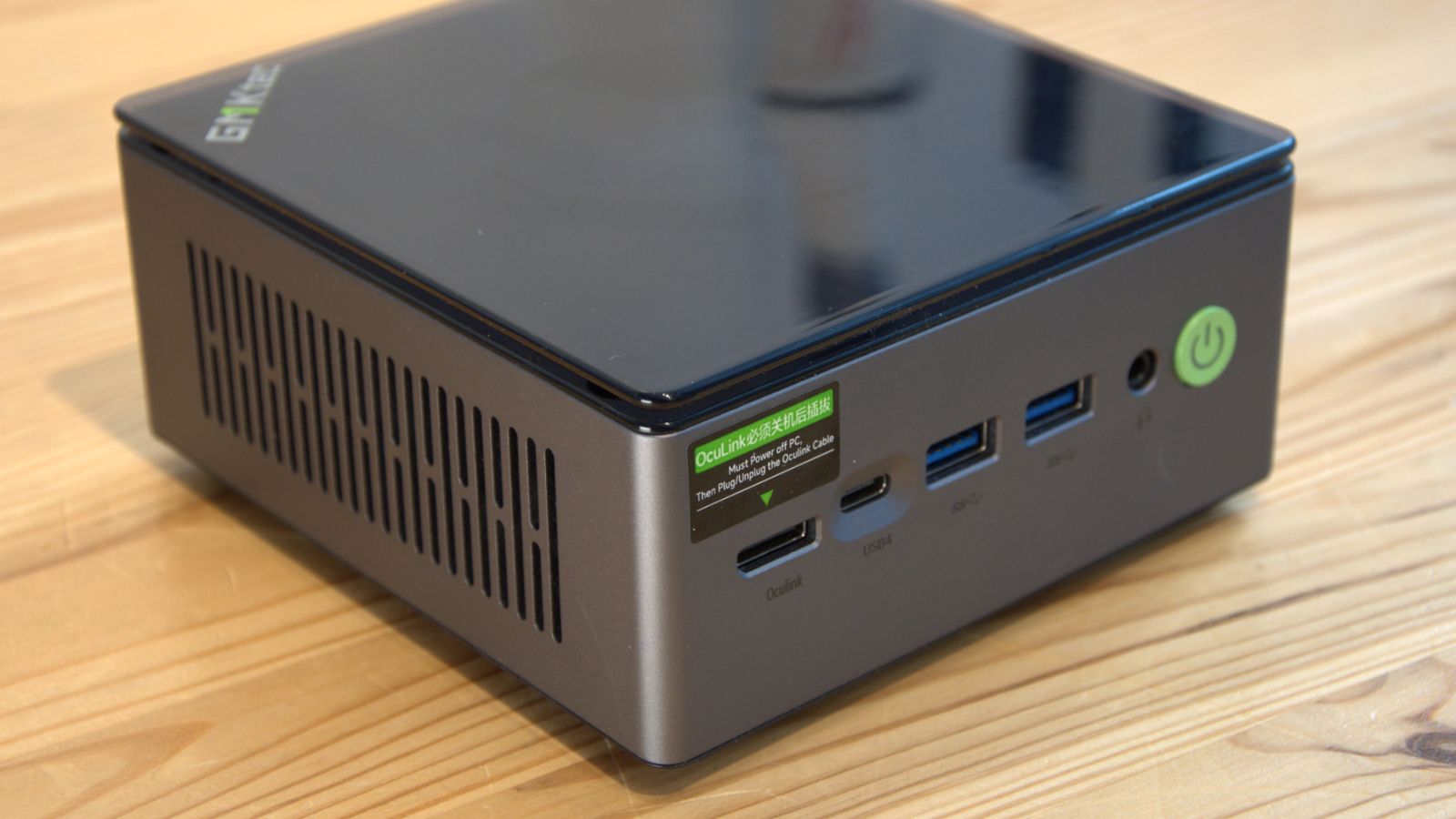
GMKtec NucBox M7 Pro: Price & availability
- How much does it cost? From $320
- When is it out? Available now
- Where can you get it? Directly from GMKtec or via Amazon
As with many of the GMKtec mini PC range, the M7 Pro is available in multiple SKUs. The cheapest is a barebones model without memory, storage, or an operating system installed for only $319.99. That's $160 less than the MSRP, even if we can't confirm if they sold any at that higher price.
The two other options include Windows 11 Pro and either 32GB of RAM and 1TB of storage or 64GB of RAM and 2TB of storage. These SKUs cost $459.99 and $629.99, respectively.
Bought through Amazon.com, the 32GB/1TB model is $449.99, and a 32GB/2TB option for $499.98.
When you crunch those numbers, they make zero sense. Adding 32GB, 1TB, and Windows increases the barebones price by $140, but doubling the memory and storage adds another $170.
We'd probably recommend buying the 32GB and 1TB option and upgrading it yourself. However, both DDR5 slots are occupied, and the two 16GB modules would need to be removed to increase the memory to 64GB.
We're aware that GMKtec is the only mainstream mini PC maker to have used the AMD Ryzen 9 PRO 6950H, so like-for-like comparisons are difficult.
However, Minisforum has the EliteMini UM780 XTX, which uses the AMD Ryzen 7 7840HS processor and offers the OCuLink port. But, the price of that machine is $439 for the barebones and $569 for the 32GB and 1TB options.
There is also a machine from Beelink, the GT Ultra, which we will review shortly but is even more expensive.
Overall, it might use slightly older mobile processor technology, but the asking price for the M7 Pro elevates it to something of a bargain.
However, GMKtec does make a non-Pro model of the M7, and we'll be covering that soon to see if that offers even better value.
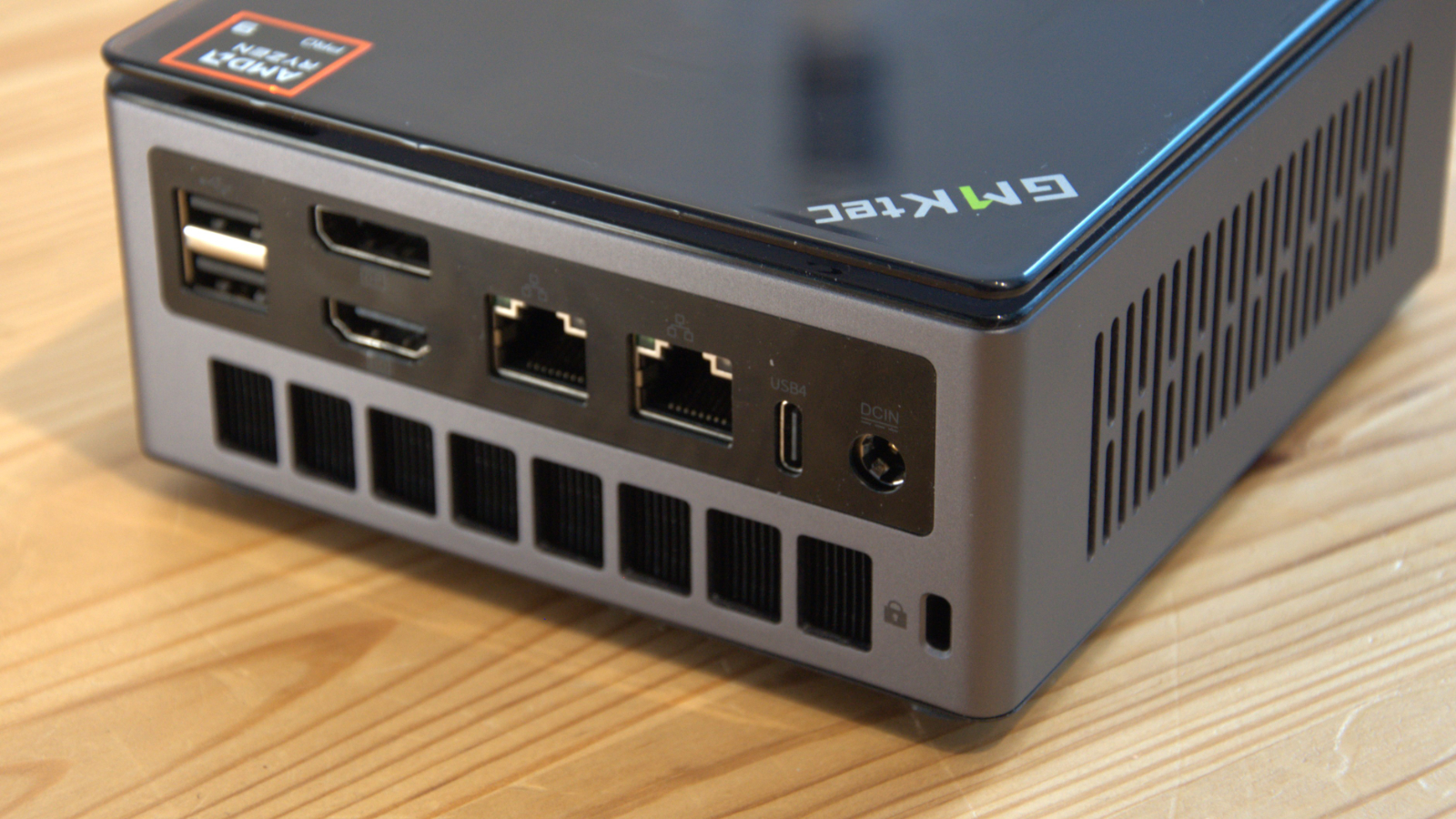
- Value: 4 / 5
GMKtec NucBox M7 Pro: Specifications
| Item | Spec |
|---|---|
| CPU: | AMD Ryzen 9 PRO 6950H (8 cores, 16 Threads) |
| GPU: | Radeon 680M |
| RAM: | 32GB DDR5-4800 (2400 MHz) (16GB x 2) Expandable to 96GB |
| Storage: | 1TB M.2 2280 PCIe Gen 4 |
| Expansion: | 1x M.2 2280 PCIe Gen 4 |
| Ports: | 1x OCuLink, 2x USB 4.0 Type-C, 2x USB 3.2 Gen 2 Type-A, 1x USB 2.0, 1x HDMI 2.1, 1x DisplayPort 2.0, 1x 3.5mm CTIA |
| Networking: | 2x 2.5GbE LAN, WiFi 6, Bluetooth 5.2 |
| OS: | Windows 11 Pro (pre-installed) |
| Base Power: | 35W-70W (configurable) |
| PSU: | 19V 6.32A 120.08W |
| Dimensions: | 123 x 111 x 43 (mm) |
GMKtec NucBox M7 Pro: Design
- Metal skinned
- Plenty of ports
- Relatively easy access inside
In previous GMKtec designs, the amount of plastic has been a minor issue, but the M7 Pro does at least have gunmetal skinning on its sides, with a plastic top and bottom.
Slots on the sides and underneath provide an entry point for air, which is then ejected on the lower rear and from a gap around the lid.
GMKtec engineers apparently divided the system into a top and bottom compartment and managed each with its independent exhaust ports and fans. This delivers a reasonably quiet system even when it's being benchmark-stressed.
I/O ports on this system are numerous, with seven on the rear and five on the front. USB is evenly distributed, with three on the front and back and one of the desirable USB 4.0 on each of those faces.
For display output, the M7 Pro has HDMI and DisplayPort on the back, but combined with the two USB-C ports that can also connect monitors, it is possible to attach four displays to this system. That said, the Radeon 680M GPU integrated into the Ryzen 9 might struggle if all four graphics outputs showed contents being rapidly updated.
But that's where the OCuLink port comes in, as it can circumvent the limitations of the Radeon with the power of an externally connected discrete video card that could be AMD, Nvidia, or even Intel-made.
The placement of the OCuLink port on the front does seem out of place, but if the machine is VESA mounted to a monitor, this probably won't make a difference.
To operate the OCuLink port, a special cable and an external enclosure for the video card, which includes a power supply dedicated to the discrete video card, are required.
A minor snag is that GMKtec doesn't currently make an OCuLink enclosure for the M7 Pro, but it seems a natural progression that one might be coming. In the meantime, other brands have these enclosures, but we never tested whether they work with this OCuLink port specifically.
Some SFF system makers don't like customers inside their systems, but given that GMKtec sells the M7 Pro in a barebones model, the engineers who designed it considered this feature.
Access requires that you simply twist the top, and once this is removed, four screws release the fan housing on top, and you can easily get to the top of the motherboard where the memory and storage are located.
Our review hardware had two Crucial-branded DDR5 modules (2x 16GB), which are socketed for easy replacement. Recently, 48GB modules have become available for those who want the maximum 96GB of memory in their M7 Pro.
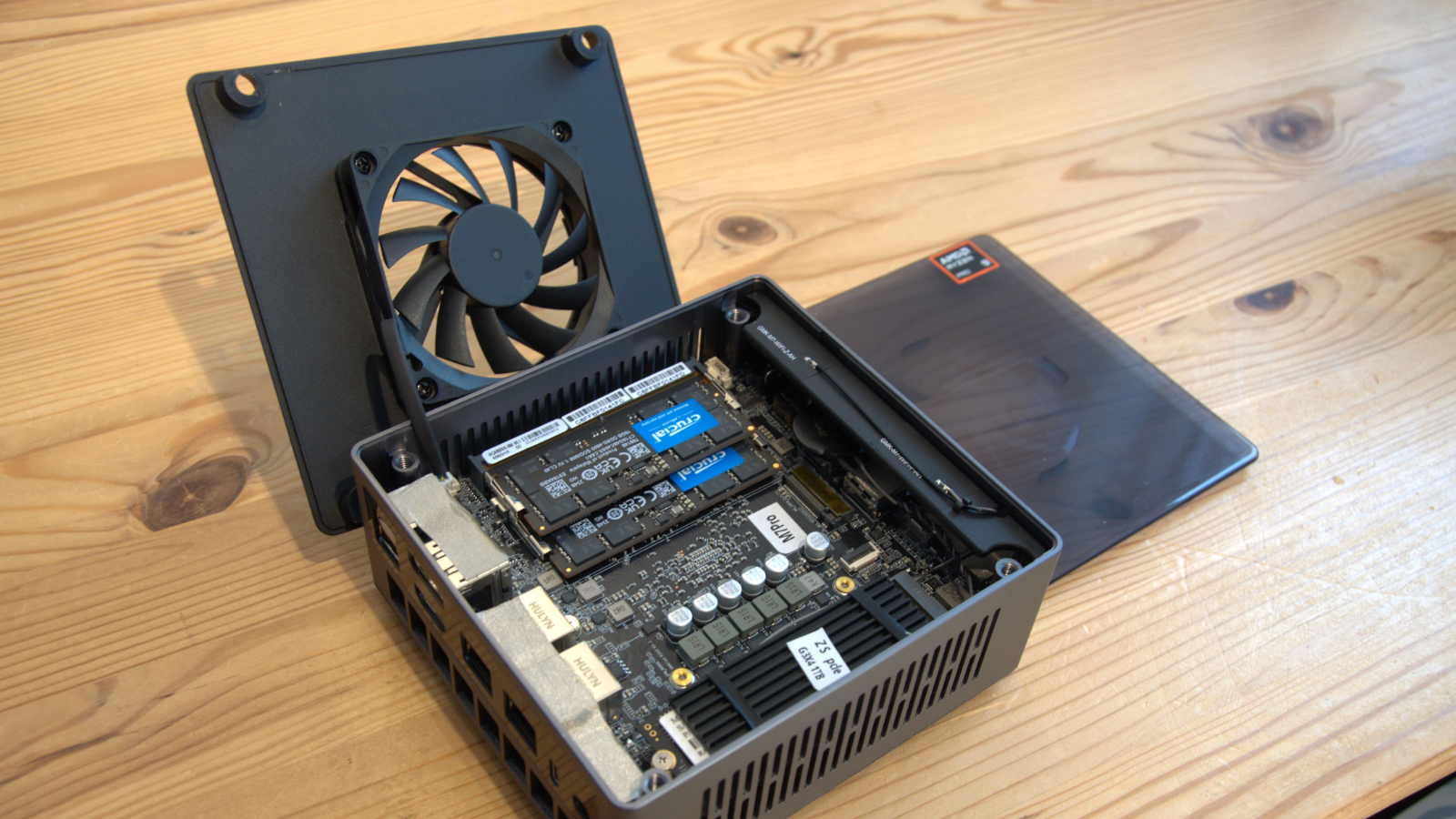
Storage is via two 2280 M.2 PCIe slots, with one already occupied on the top two SKUs.
It's great news that they are both 2280-sized, as we've seen many designs recently where the second slot is demoted to 2242 or even 2230 size.
The largest modules that are easily available are 4TB, with only a few brands, like WD, offering 8TB drives. This will likely change in the next year, with 8TB becoming more common and even 16TB drives available. With two slots, the M7 Pro is easy to upgrade, as you can easily clone the existing storage to larger capacity modules.
The only issue with M.2 drives is that most enclosures for NUC systems don't offer room for drives that come with a mounted heatsink.
As a development from the K6 and its ilk, the M7 Pro is refined with easy internal access and good options for more memory or drive capacity once inside.
- Design: 4 / 5
GMKtec NucBox M7 Pro: Features
- AMD Ryzen 9 PRO 6950H (8 cores, 16 Threads)
- 20 PCIe Lanes
- Radeon 680M
- OCuLink
The mobile AMD 6000 processors first appeared in 2022, making them approaching their second birthday. Since then, AMD has released a slew of 7000 series designs and, most recently, the first 8000 series chips.
What's curious about AMD mobile processors of this specification is that they all come with a similar architecture with eight cores, each with hyperthreading. The differences between the different series are quite subtle and often involve slightly higher boost clocks or a better GPU.
Therefore, the AMD Ryzen 9 PRO 6950H is close in performance and capabilities to the Ryzen 9 7940HS that arrived in 2023, with a Zen 4 architecture.
The advantages of the Ryzen 9 PRO 6950H over lesser models are that its Zen3+ design supports DDR5 memory, Advanced Vector Extensions (AVX) to accelerate performance for calculation-heavy applications, and has twenty PCIe 4.0 lanes.
The downside of this processor is that it uses the older Radeon 680M integrated video, although the 780M that's appeared in subsequent chips isn't dramatically faster.
While it is possible to achieve some modest gaming on the Radeon 680M, those wanting more graphics performance should consider using the OCuLink port to attach a discrete desktop GPU. Not only will doing that provide, depending on the graphics card, a magnitude better performance, but as the card will have its own memory, it won't be sharing the memory and bandwidth of the main memory with the processor.
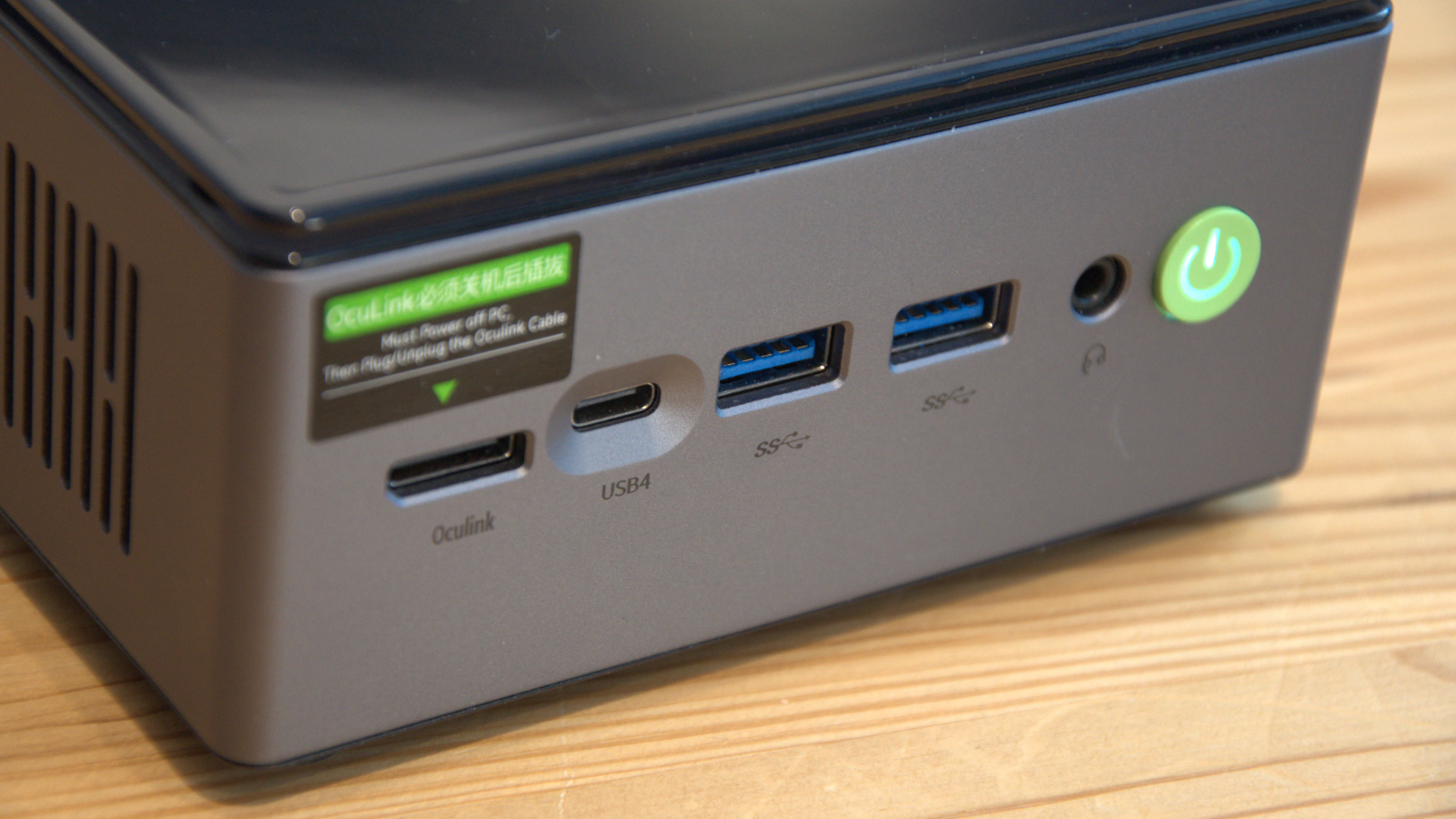
The flip side of the OCuLink port is that it doesn't offer the same bandwidth as an x4 or better PCIe slot, and using it will reduce the lanes available for other purposes.
To reduce traffic across the OCuLink connection during interactive graphics rendering, it is best to use a video card with enough memory to hold the textures it needs without repeatedly pulling them across the bus. Therefore, graphics cards with 8GB of VRAM or less should be avoided for optimal performance.
Overall, the chip in this machine might be circa 2022, but it has plenty of useful performance for the majority of customers.
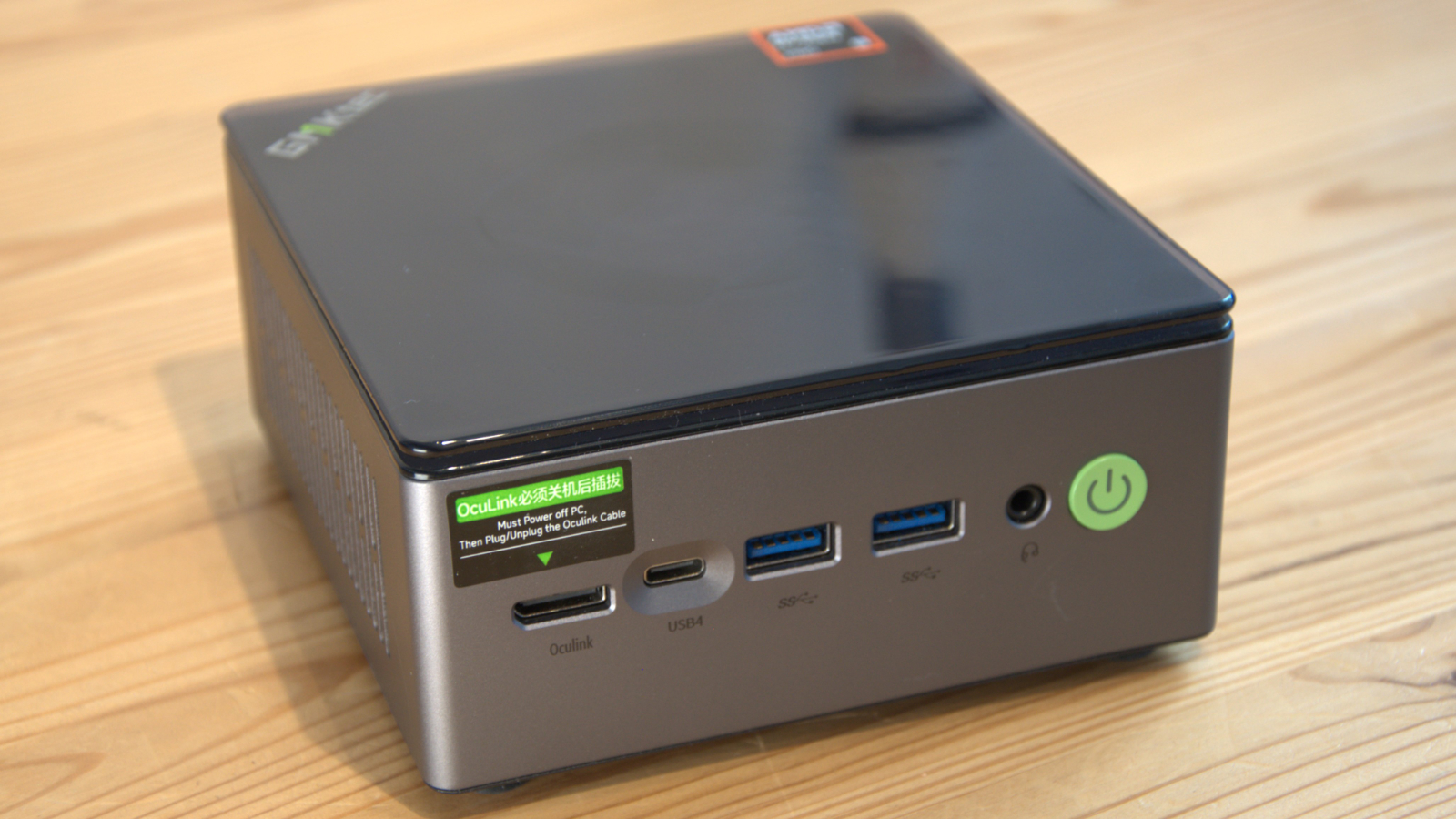
- Features: 4 / 5
GMKtec NucBox M7 Pro: Performance
- Decent performance
- Radeon 680M
- PCIe 3.0 NVMe
| Mini PC | Header Cell - Column 1 | GMKtec M7 Pro | GMKtec K8 |
|---|---|---|---|
| CPU | Row 0 - Cell 1 | AMD Ryzen 9 PRO 6950H | AMD Ryzen 7 8845HS |
| RAM | Row 1 - Cell 1 | 32GB DDR5 (2x16GB) | 32GB DDR5 (2x16GB) |
| Storage | Row 2 - Cell 1 | 1TB NVMe | 1TB NVMe |
| Graphics | Row 3 - Cell 1 | Radeon 680M | Radeon 780M |
| 3DMark | WildLife | 15703 | 16149 |
| Row 5 - Cell 0 | FireStrike | 7036 | 7664 |
| Row 6 - Cell 0 | TimeSpy | 2811 | 3102 |
| CineBench23 | Single | 1570 | 1764 |
| Row 8 - Cell 0 | Multi | 13872 | 15691 |
| Row 9 - Cell 0 | Ratio | 8.83 | 8.9 |
| GeekBench | Single | 1625 | 1957 |
| Row 11 - Cell 0 | Multi | 9973 | 11864 |
| Row 12 - Cell 0 | OpenCL | 34489 | 34563 |
| Row 13 - Cell 0 | Vulkan | 29865 | 30270 |
| CrystalDisk | Read MB/s | 3233 | 5105 |
| Row 15 - Cell 0 | Write MB/s | 3101 | 4390 |
| PCMark 10 | Office | 6819 | 7396 |
| WEI | Row 17 - Cell 1 | 8.2 | 8.2 |
What is fascinating about the M7 Pro is that it is almost as fast as the K8 model that uses the AMD Ryzen 7 8845HS, a Hawk Point chip that is Zen 4/RDNA3/XDNA based.
How is this possible? Well, the standard TPD of the Ryzen 9 PRO 6950H is 45W, but in the context that this machine isn't a laptop running off batteries, it has been adjusted to allow for 70W operating in the M7 Pro.
That elevates the M7 Pro performance a notch, to the point where the lack of a Radeon 780M GPU is largely negated.
The only place that the M7 Pro system is notably slower is in the NVMe storage, where the M7 Pro is evidently using PCIe Gen 3 storage, and the K8 has a Gen 4 drive.
The GMKtec documentation states that both M.2 slots are PCIe 4.0 rated, so we assume this shortfall can be addressed merely by dropping in a better SSD.
It should be noted that the K8, as specified here, costs $620, an additional $160 more than the M7 Pro.
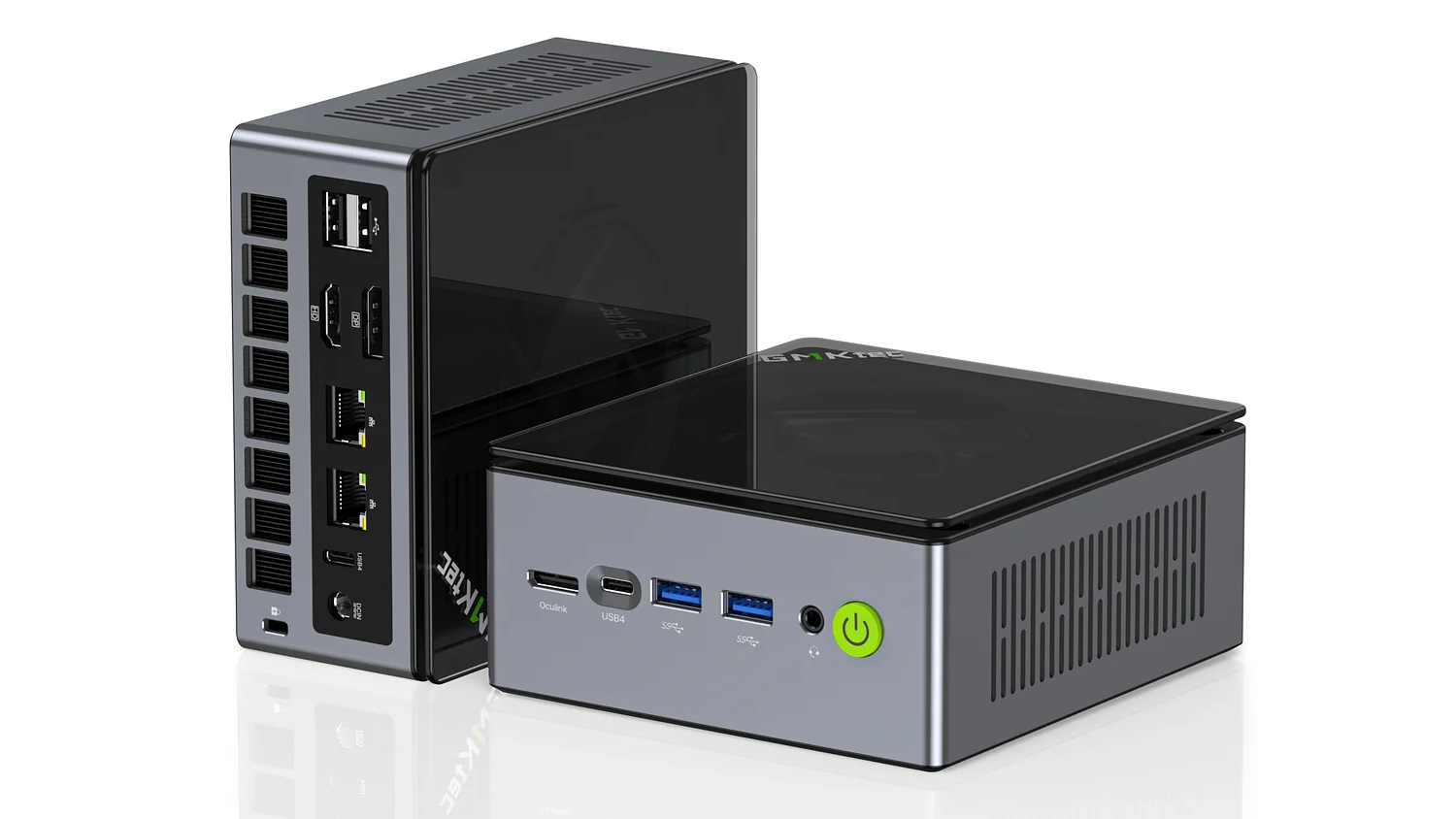
- Performance: 4/ 5
GMKtec NucBox M7 Pro: Verdict
For the money, this is a remarkable Mini PC that combines power and flexibility, making it an obvious choice for a wide range of tasks.
The inclusion of the OCuLink port also addresses the single biggest limitation of the Mini PC. Specifically, they don't have an externally exposed PCIe slot.
While OCuLink is a subversion of Thunderbolt technology and doesn't offer the same bandwidth as a proper 4X PCIe slot, it can go some way to fix the performance limitations imposed by integrated graphics with a suitable OCuLink enclosure and discrete video card.
The only fly in this ointment for GMKtec is that it lacks a branded OCulink enclosure, forcing its customers to source this from its competitors.
Even if you don't want to go down the external GPU path, the M7 Pro is a great performer, and the perfect device for repurposing should plans change.
Should you buy a GMKtec NucBox M7 Pro?
| Attributes | Notes | Score |
|---|---|---|
| Value | For the system inside, this is a bargain. | 4 / 5 |
| Design | Metal and plastic, but well designed and made to a high quality. | 4 / 5 |
| Features | Ryzen 9 CPU, USB 4.0 and OCuLink. | 4 / 5 |
| Performance | Decent performance from a 6000 series CPU with 70W of power | 4 / 5 |
| Overall | A system packed full of potential | 4 / 5 |
Buy it if...
You want a performance mini
Considering that some much less powerful Mini systems cost dramatically more, the M7 Pro is definitely an option where you get plenty for the cost. This makes it ideal for those jobs that need the power of a desktop system, but without sacrificing the space those take up.
You want extra GPU power
The Radeon 680M is still a solid integrated GPU, but this design can go much better using an externally connected GPU of your choice. It might be cheaper to buy a desktop for this job, but the M7 Pro can connect a video card externally.
Don't Buy it if...
Fan noise is a problem
In normal use, the M7 Pro is reasonably quiet, but if the GPU is performing, the fans can become annoying. Having an external GPU might increase the noise aspect.
You want Intel
These systems are exclusively AMD Ryzen. GMKtec makes high-end Intel systems, like the NucBox K9, but expect to pay more for these, and these don't offer the OCuLink port.
Also Consider
Geekom MegaMini G1
The MegaMini G1 is unlike any other SSF system you will likely encounter. Based on the Intel Core i9-13900K processor, it also has OCuLink, but it also has a discrete GPU inside with water cooling. You can't upgrade the RTX 4060 inside the case, but you can add an even more powerful GPU using the OCuLink connection.
Check out our Geekom MegaMini G1 revew
Want to power-up productivity on the go we reviewed the best mobile workstations.
Mark is an expert on 3D printers, drones and phones. He also covers storage, including SSDs, NAS drives and portable hard drives. He started writing in 1986 and has contributed to MicroMart, PC Format, 3D World, among others.
